A Week in our Garden January 3rd - 9th 2022
It is amazing what is in our gardens if you start looking. We decided to document everything we saw in our 2.5ha garden for a week and photograph it if possible. The most obvious is the ever present birdlife. Over the years we have recorded 158 species, this week we recorded 52 species (List at end of blog). Of note were White-headed Pigeon, Pale-vented Bush-hen, Buff-breasted Paradise-Kingfisher and Noisy Pitta.
 |
| White-headed Pigeon |
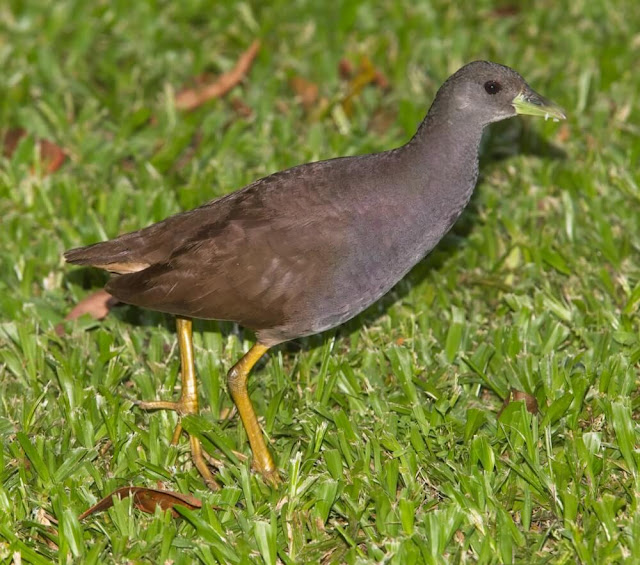 |
| Pale-vented Bush-hen |
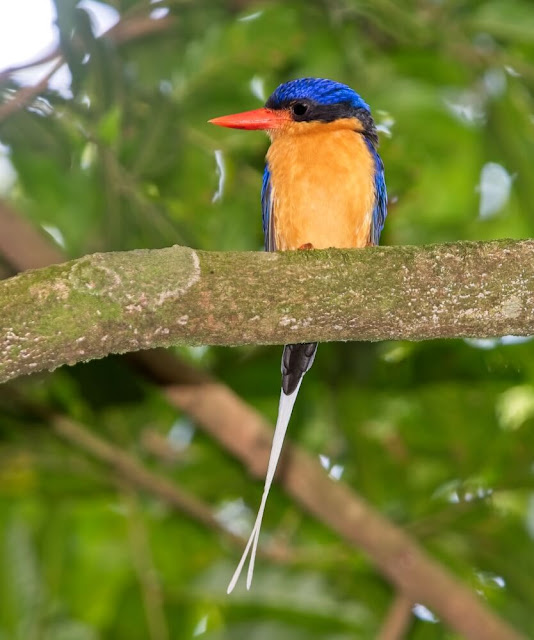 |
| Buff-breasted Paradise-Kingfisher |
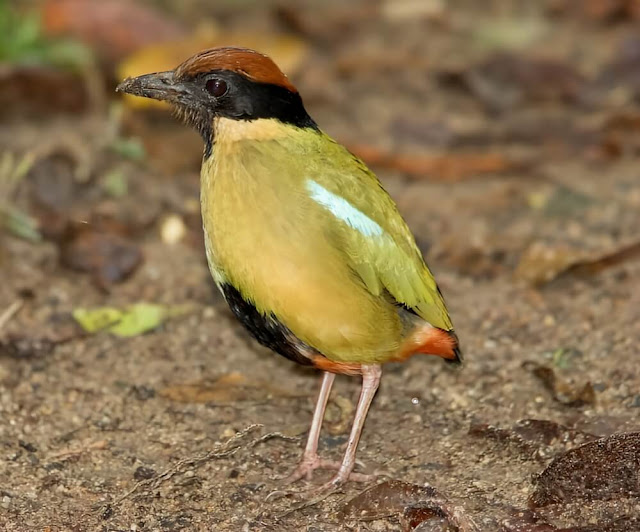 |
| Noisy Pitta |
Dragon and Damselflies
The most numerous insect species was the dragonflies with at least 19 challenging species.
 |
| Australasian Slimwing (F) |
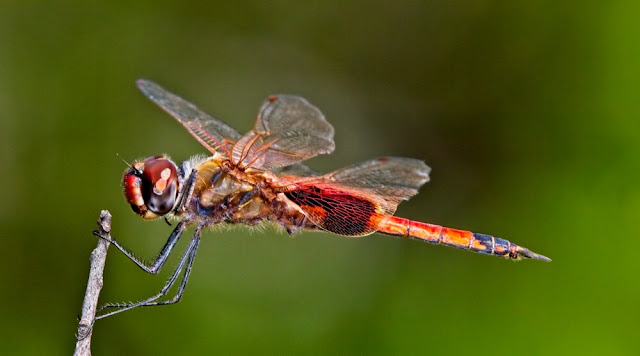 |
| Common Glider |
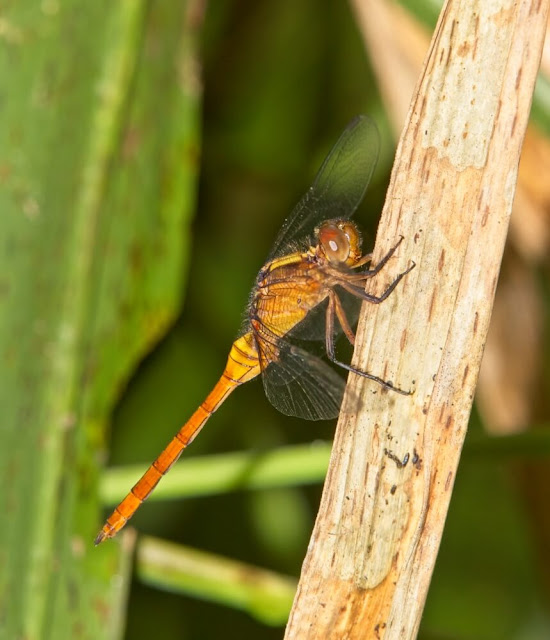 |
| Fiery Skimmer (F) |
 |
| Fiery Skimmer (M) |
 |
| Graphic Flutterer |
 |
| Sapphire Flutterer |
 |
| Green Skimmer |
 |
| Painted Grasshawk |
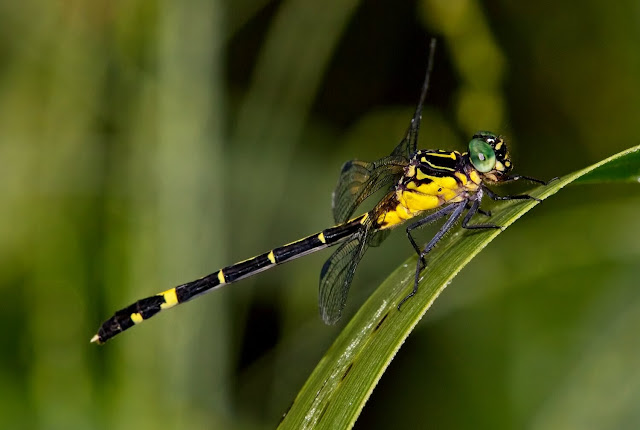 |
| Pale Hunter |
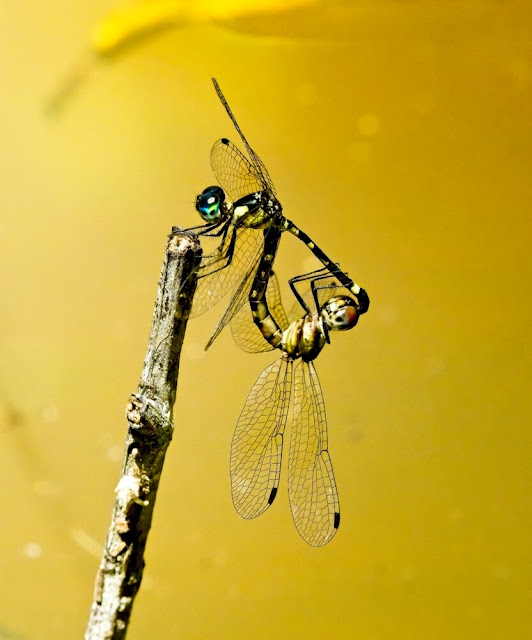 |
| Rainforest Elf (M & F) |
 |
| Red Swampdragon (F) |
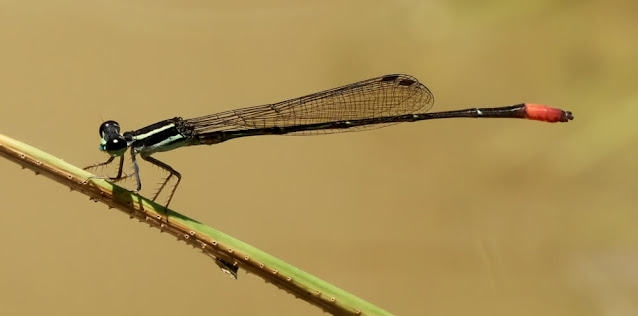 |
| Red-tipped Shadefly |
 |
| Common Bluetail (M) |
 |
| Yellow-striped Flutterer |
 |
| Palemouth |
Spiders
There were a few spiders showing, mainly at night.
 |
| Jumping Spider |
Size 5-8mm
 |
| Net Casting Spider |
Catches prey by expanding the net and lunging forward to engulf it.
 |
| Northern Green Jumping Spider |
Found in rainforests and garden. This is a big (15mm), obvious spider, inquisitive and fearless. It readily bites but not seriously harmful, causing only mild to sharp pain and swelling.
 |
| Slow Moving Spitting Spider |
 |
| Painted St. Andrews Cross Spider |
Diagnostic cross shaped web.
 |
| Giant Golden Orb-weaver Nephila pillipes - juvenile |
One of the largest spiders in the world, females up to 50mm, males are tiny 7mm.
Hunts across the surface of the water on our dam. Usually wait on the waters edge with 4-6 legs resting on the water to detect the vibrations of prey.
Also known as Eastern Sedge Frog.
A couple of Cicada, the lower one looks like it has just emerged from it's nymph case.
Stick insects are very difficult to identify and photograph This one is known as the Giant Northern Stick Insect or Wuelfing's Stick Insect. (Thanks to Alan Henderson for ID).
This termite was investigating a paperbark tree.
One of our neighbours honey bees attending grevillea "Golden Lyre" , a hybrid between G. formosa (widespread in the Kakadu area of the Northern Territory) and G. ‘Honey Gem’ (a Queensland hybrid, common in cultivation).
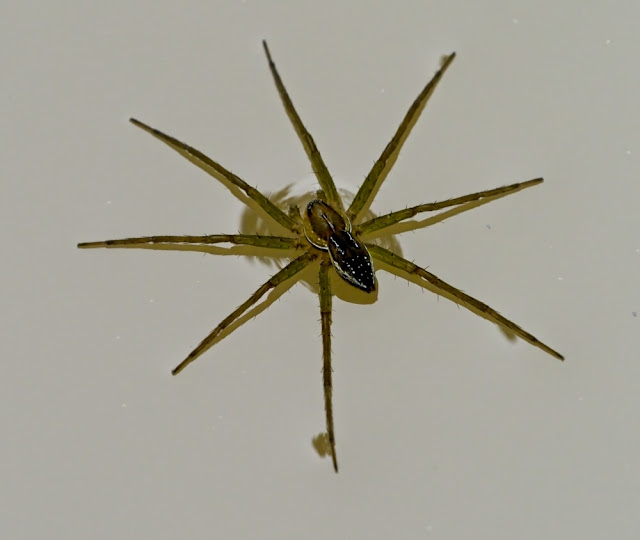 |
| Northern Fishing Spider |
Thanks to Greg Anderson for ID help in the field and for co-writing "A Field Guide to Spiders of Australia" with Robert Whyte a most useful guide with excellent photos.
Aquatic Bugs
 |
| Water Measurer |
Also known as Marsh Treaders, Water Treaders or Pond-skaters. Their head is 3 times as long as it is wide. Their name come about from the fact they resemble a yardstick for measuring the water surface.
Water striders walk on top of the water by using the surface tension. They feed on fallen insects that get trapped in the waters surface tension by detecting the ripples in the water.
Frogs
 |
| Dainty Green Tree Frog |
Also known as Graceful Tree Frog or Dainty Tree Frog.
 |
| Eastern Dwarf Tree Frog |
 |
| Tawny Rocket Frog |
Also known as Bridle Frog.
 |
| White-lipped Tree Frog |
Also known as Giant Tree Frog.
 |
| Roth's Tree Frog |
Also known as Northern Laughing Tree Frog or Red-eyed Tree Frog.
Other Critters
These Carpenter Ants decided to burrow their way into our kitchen, un-welcome visitors! Mean looking, about 25mm long
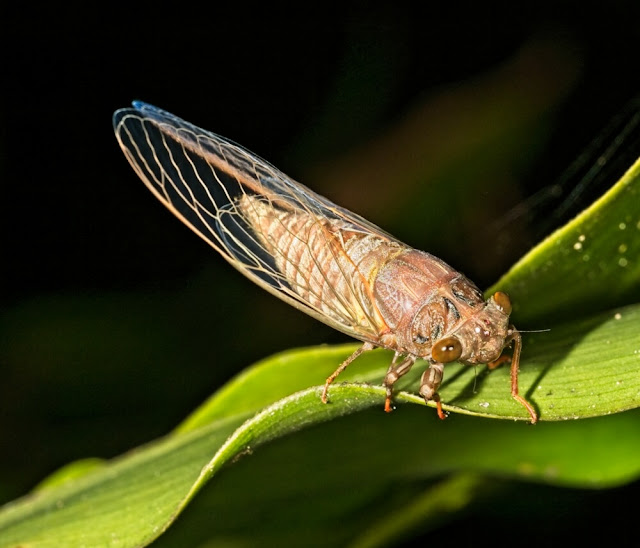 |
| Cicada Sp. |
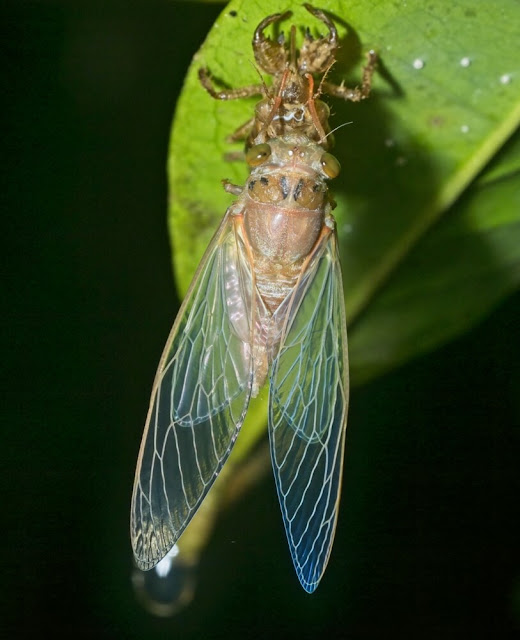 |
| Cicada Sp. |
 |
| Nymph of the Giant or Hedge Grasshopper Valanga irregularis |
The giant grasshopper is the largest of the short horned (antennae) grasshoppers in Australia, with adults growing up to 90 mm long. This is it's very small nymph stage. (Thanks to David Rentz for ID).
 |
| Green Vegetable Shield Bug |
The Green Vegetable Shield Bug is a major pest of soybeans, especially in coastal areas. It attacks other bean crops such as mung beans, navy beans and azuki beans, as well as cotton. First found in Australia in 1916.
 |
| Last instar Nymph of Conocephalus semivittatus. |
This katydid is a last instar (the developmental stage of an arthropod between moults) nymph of Conocephalus semivittatus. (Thanks to David Rentz for ID).
 |
| Rhinoceros or Elephant Beetle |
Has sharp claws and strong legs but not dangerous, size 60mm. Despite the fearsome look it is incapable of defending itself against a determined predator.
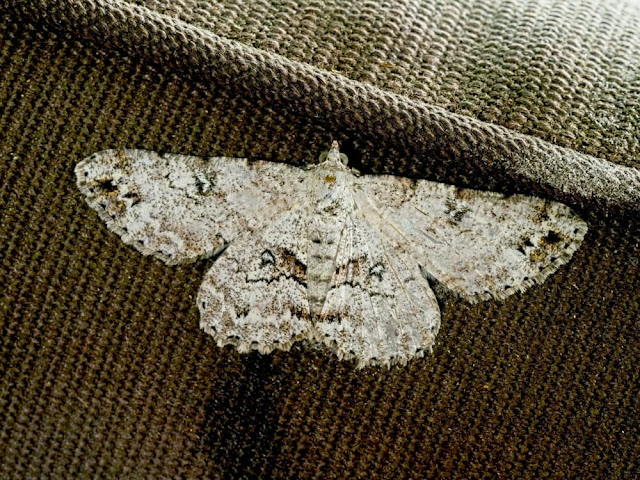 |
| Moth Cleora repetita |
Cleora repetita is a species of moth of the family Geometridae first described by Arthur Gardiner Butler in 1882. This one is quite worn. (Thanks to Dominic Funnell for ID).
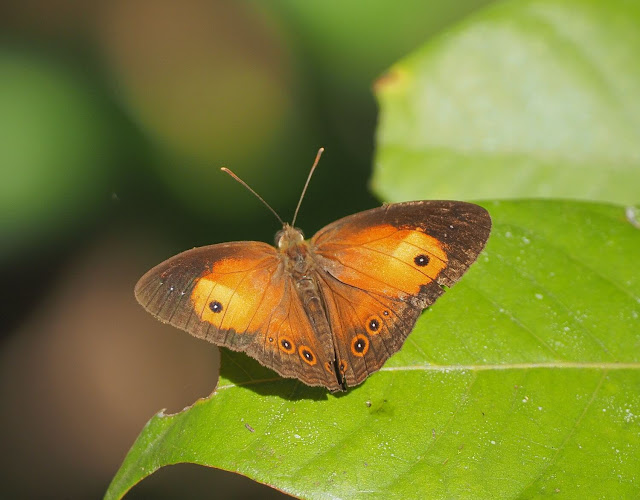 |
| Orange Bushbrown |
The orange bushbrown, is a species of butterfly in the family Nymphalidae. It is found in Indonesia (Irian Jaya, Maluku), New Guinea and Queensland where it is common.
 |
| Robber Fly? |
 |
| Robber Fly |
 |
| Wuelfing's Stick Insect Acrophylla wuelfingi |
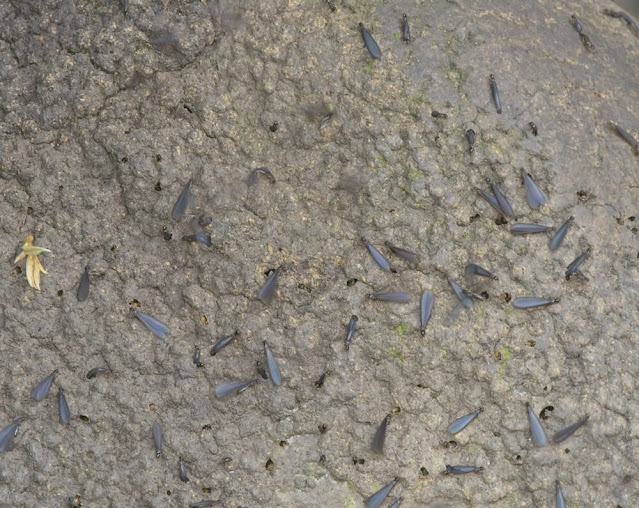 |
| Termite sp. |
Hot, humid weather encouraged these termites to emerge from their nest mound.
 |
| Termite sp. |
 |
| Honey Bee |
Mammal
 |
| Pademelon - male |
So there you have it, a week in our Julatten garden. It is truly amazing what you can find in your garden if you are prepared to take the time and look around. This is only some of the critters we have recorded in our garden over the last seven years.
Bird Species List
Pacific Black Duck Australian Brushturkey Orange-footed Scrubfowl White-headed Pigeon Brown Cuckoo-Dove Peaceful Dove Bar-shouldered Dove Wompoo Fruit-Dove Superb Fruit-Dove Pheasant Coucal Little Bronze-Cuckoo Brush Cuckoo Pacific Swift Pale-vented Bush-hen Masked Lapwing Laughing Kookaburra Forest Kingfisher Buff-breasted Paradise-Kingfisher Sulphur-crested Cockatoo Double-eyed Fig-Parrot Rainbow Lorikeet Noisy Pitta Spotted Catbird Great Bowerbird Yellow-spotted Honeyeater Cryptic Honeyeater |
Dusky Honeyeater
Brown Honeyeater Macleay's Honeyeater Helmeted Friarbird Large-billed Scrubwren Fairy Gerygone Large-billed Gerygone Barred Cuckooshrike Varied Triller Common Cicadabird Rufous Shrikethrush Grey Whistler Rufous Whistler Olive-backed Oriole Australasian Figbird Black Butcherbird Spangled Drongo Black-faced Monarch Spectacled Monarch Leaden Flycatcher Golden-headed Cisticola Silvereye Mistletoebird Olive-backed Sunbird Red-browed Finch Chestnut-breasted Mannikin |

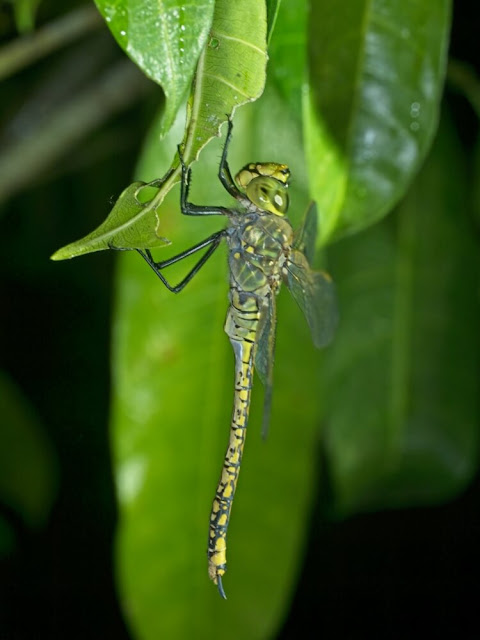







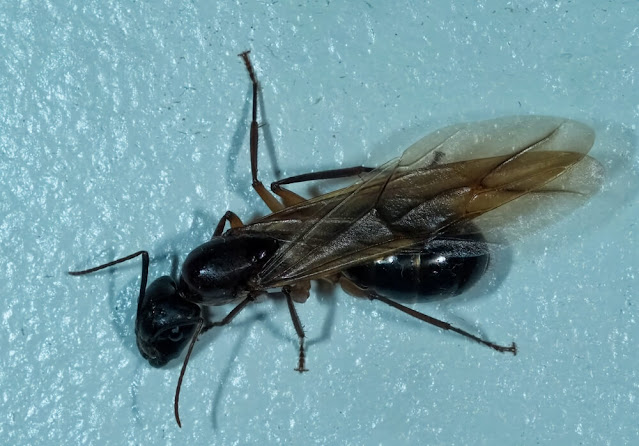

No comments:
Post a Comment
Note: only a member of this blog may post a comment.